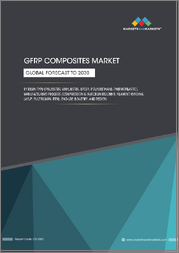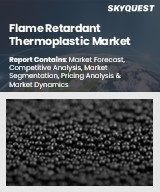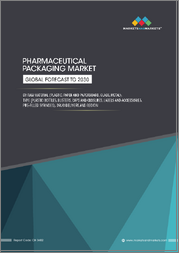
|
시장보고서
상품코드
1803717
연마용 마이크로비즈 시장 : 재료 유형, 입자 지름, 제품 유형, 최종사용자, 유통 채널별 - 세계 예측(2025-2030년)Grinding Microbeads Market by Material Type, Particle Size, Product Type, End User, Distribution Channel - Global Forecast 2025-2030 |
||||||
연마용 마이크로비즈 시장은 2024년에는 3억 432만 달러에 달하며, 2025년에는 3억 2,210만 달러, CAGR 6.07%로 성장하며, 2030년에는 4억 3,344만 달러에 달할 것으로 예측됩니다.
| 주요 시장 통계 | |
|---|---|
| 기준연도 2024 | 3억 432만 달러 |
| 추정연도 2025 | 3억 2,210만 달러 |
| 예측연도 2030 | 4억 3,344만 달러 |
| CAGR(%) | 6.07% |
현대 산업 및 기술 분야에서 연마 마이크로비즈의 진화와 전략적 중요성을 밝히는 종합적인 개요를 제공
연마용 마이크로 비드는 원료와 고성능 용도 사이의 간극을 메우고 정밀한 재료 마무리에 필수적인 구성 요소입니다. 항공우주 부품의 초미세 표면 연마부터 첨단 세라믹 및 반도체 가공에서 제어된 마모를 실현하는 것까지 다양한 용도로 활용되고 있습니다. 제조업체와 최종사용자가 더 엄격한 공차, 더 높은 일관성, 더 나은 환경 프로파일을 지속적으로 요구함에 따라 이러한 미세 입자는 다양한 산업적 요구를 지원하는 고유한 특성 조합을 제공합니다.
지속가능한 실천, 첨단 재료 연구, 디지털 혁신이 연마 마이크로비즈 산업을 어떻게 변화시키고 있는가?
지속가능성, 디지털화, 첨단 소재가 융합되어 가치 창출을 재정의하는 가운데, 연마용 마이크로비즈 산업은 큰 변화의 시기를 맞이하고 있습니다. 제조업체들은 에너지 소비를 줄이고 폐기물을 최소화하는 친환경 배합에 투자하고 있으며, 디지털 플랫폼과 데이터 분석을 통해 공정 관리와 품질 보증을 강화하고 있습니다. 이러한 인더스트리 4.0으로의 전환은 비드의 무결성과 성능을 실시간으로 모니터링하여 생산 라인 전반에 걸쳐 일관된 결과를 보장하는 스마트 제조의 채택을 가속화하고 있습니다.
2025년 미국 관세 정책이 연마재 마이크로비즈 공급망, 비용, 세계 무역 역학에 미치는 영향에 대해 살펴봅니다.
2025년 미국 관세 개정 조치의 시행은 연마용 마이크로비즈 이해관계자들에게 새로운 비용 고려사항과 공급망 복잡성을 가져왔습니다. 수입 원자재 및 완성된 연마 비드에 대한 관세로 인해 생산자들은 조달 전략을 재검토하고 보다 유리한 무역 협정을 체결한 지역의 대체 공급업체를 찾아야 했습니다. 이러한 조정은 특히 국경 간 물류에 크게 의존하는 기업의 리드 타임, 재고 관리 관행 및 전반적인 비용 구조에 영향을 미치고 있습니다.
재료 구성, 입자 크기, 제품 형태, 최종사용자용도, 유통 경로 세분화를 통해 비즈니스 동인을 파악할 수 있습니다.
연마용 마이크로비즈 수요를 미묘하게 이해하려면 재료, 치수, 형태, 용도, 유통의 뉘앙스를 파악할 수 있는 세분화 렌즈가 필요합니다. 재료 구성 측면에서 세라믹 비드는 경도와 내화학성이 뛰어나 고온 및 부식성 환경에 이상적입니다. 유리 구슬은 광학적인 투명도와 정확한 구형도를 제공하여 초정밀 연마 및 섬세한 표면 처리에 많이 이용됩니다. 폴리머 비드는 소음과 분진을 줄여 비용 효율적인 마모 제어를 실현하고, 스틸 비드는 고부하 디버링 작업에서 탁월한 충격 강도를 제공합니다.
미주, 중동 및 아프리카, 아시아태평양의 연마재 마이크로비즈의 지역별 성장 패턴과 시장 특징을 살펴봅니다.
지역 역학은 지역별 최종사용자 수요, 규제 환경, 공급망 인프라를 통해 연삭 마이크로비즈 시장을 형성합니다. 북미와 남미에서는 북미의 견고한 다운스트림 산업과 라틴아메리카의 신흥 정밀 엔지니어링 허브가 항공우주 산업과 자동차 제조 클러스터가 수요를 주도하고 있습니다. 환경 규제 준수에 대한 관심이 높아지면서 저배출 비드 배합과 사용 후 재활용 프로그램 도입이 가속화되고 있습니다.
연마용 마이크로비즈 시장 경쟁 구도를 형성하는 주요 기업, 전략적 파트너십, 혁신 동향 분석
연마용 마이크로 비드의 경쟁 환경은 기존 세계 제조업체, 지역 전문가, 민첩한 혁신가들이 특징입니다. 주요 기업은 연구개발을 우선시하고, 마모 효율을 높이고 환경 프로파일을 줄이기 위해 설계된 새로운 비드 배합을 발표했습니다. 재료 공급업체와 OEM 통합업체의 전략적 파트너십을 통해 생산 공정을 간소화하고 첨단 가공 장비와의 호환성을 보장하는 공동 설계 솔루션이 탄생했습니다.
진화하는 연마 마이크로비즈 생태계에서 우위를 점하기 위해 전략적 전술, 협력적 혁신, 지속가능한 접근방식으로 업계 리더에게 힘을 실어줍니다.
업계 리더는 혁신, 지속가능성, 운영의 우수성 사이에서 균형을 맞추는 다각적인 전략을 채택해야 합니다. 첨단 재료 과학에 대한 투자를 통해 에너지 요구 사항을 줄이고 수명주기 성능을 개선한 차세대 비드 조성물을 개발할 수 있습니다. 최종사용자 및 장비 제조업체와 공동 개발함으로써 기업은 정량화 가능한 생산성 향상과 엄격한 품질관리를 실현하는 통합 솔루션을 공동 개발할 수 있습니다.
연마용 마이크로비즈 연구를 촉진하는 데이터 소스, 분석 기술, 검증 프로토콜을 포함한 종합적인 연구 프레임워크에 대한 자세한 내용
이 조사는 1차 정보와 2차 정보를 모두 통합한 엄격한 프레임워크를 사용하여 수행되었습니다. 1차 단계에서는 비드 제조업체, 장비 OEM, 재료 과학자, 최종사용자 기술 팀의 고위 경영진과 심층 인터뷰를 진행했습니다. 이러한 대화는 기술 발전, 규제 이슈, 용도별 성능 측정 기준에 대한 직접적인 관점을 제공했습니다.
연마용 마이크로비즈 시장 잠재력에 대한 종합적인 결론을 제공하기 위해 핵심 연구 결과, 전략적 시사점, 미래 궤도를 통합
이 보고서에서는 연마용 마이크로비즈 시장을 형성하는 기본 역학, 규제 영향, 시장 경쟁 전략에 대해 정리했습니다. 지속가능한 소재, 디지털 제조 방식, 새로운 관세 제도 하에서 지역 다변화를 위한 변혁적 전환을 강조했습니다. 주요 세분화 인사이트를 통해 재료 유형, 입자 크기, 모양, 최종사용자용도, 유통 채널이 어떻게 차별화된 가치 제안을 촉진할 수 있는지에 대한 인사이트를 제공했습니다.
목차
제1장 서문
제2장 조사 방법
제3장 개요
제4장 시장 개요
제5장 시장 역학
제6장 시장 인사이트
- Porter's Five Forces 분석
- PESTEL 분석
제7장 미국 관세의 누적 영향 2025
제8장 연마용 마이크로비즈 시장 : 재료 유형별
- 세라믹 비즈
- 유리 비즈
- 폴리머 비즈
- 철강 비즈
제9장 연마용 마이크로비즈 시장 : 입자 사이즈별
- 1.0mm 미만
- 1.0mm 초과
제10장 연마용 마이크로비즈 시장 : 제품 유형별
- 불규칙
- 구형
제11장 연마용 마이크로비즈 시장 : 최종사용자별
- 항공우주
- 상업
- 방위
- 자동차
- 애프터마켓
- OEM
- 세라믹과 첨단 재료
- 일렉트로닉스 및 반도체
- 광업 및 광물 처리
- 페인트, 코팅제, 잉크
제12장 연마용 마이크로비즈 시장 : 유통 채널별
- 오프라인
- 직접 판매
- 판매 대리점 및 소매업체
- 온라인
- E-Commerce 플랫폼
- 제조업체 웹사이트
제13장 아메리카의 연마용 마이크로비즈 시장
- 미국
- 캐나다
- 멕시코
- 브라질
- 아르헨티나
제14장 유럽, 중동 및 아프리카의 연마용 마이크로비즈 시장
- 영국
- 독일
- 프랑스
- 러시아
- 이탈리아
- 스페인
- 아랍에미리트
- 사우디아라비아
- 남아프리카공화국
- 덴마크
- 네덜란드
- 카타르
- 핀란드
- 스웨덴
- 나이지리아
- 이집트
- 튀르키예
- 이스라엘
- 노르웨이
- 폴란드
- 스위스
제15장 아시아태평양의 연마용 마이크로비즈 시장
- 중국
- 인도
- 일본
- 호주
- 한국
- 인도네시아
- 태국
- 필리핀
- 말레이시아
- 싱가포르
- 베트남
- 대만
제16장 경쟁 구도
- 시장 점유율 분석, 2024
- FPNV 포지셔닝 매트릭스, 2024
- 경쟁 분석
- Arena Blast
- LANGFANG OLAN GLASS BEADS CO., LTD
- Buhler Group AG
- Compagnie de Saint-Gobain S.A
- Jyoti Ceramic Industries Pvt. Ltd.
- Liaoning EO Technology Co.,Ltd
- Lingshou County Wancheng Mineral Co., Ltd.
- Luoyang Zhongchao New Materials Co., Ltd.
- NETZSCH Group
- Shandong Titan Industrial Ceramics Co.,ltd
- Sigmund Lindner GmbH
- VISHAL GLASS SHOTS
- Xinda Composite Material Technology(Weihai) Co., Ltd
제17장 리서치 AI
제18장 리서치 통계
제19장 리서치 컨택
제20장 리서치 기사
제21장 부록
KSA 25.09.11The Grinding Microbeads Market was valued at USD 304.32 million in 2024 and is projected to grow to USD 322.10 million in 2025, with a CAGR of 6.07%, reaching USD 433.44 million by 2030.
| KEY MARKET STATISTICS | |
|---|---|
| Base Year [2024] | USD 304.32 million |
| Estimated Year [2025] | USD 322.10 million |
| Forecast Year [2030] | USD 433.44 million |
| CAGR (%) | 6.07% |
A Comprehensive Overview Unveiling the Evolution and Strategic Importance of Grinding Microbeads in Contemporary Industrial and Technological Sectors
Grinding microbeads have become an indispensable component in precision material finishing, bridging the gap between raw materials and high-performance applications. Their versatility spans from delivering ultra-fine surface polishing on aerospace components to enabling controlled abrasion in advanced ceramics and semiconductor processing. As manufacturers and end users continuously demand tighter tolerances, higher consistency, and improved environmental profiles, these microscopic particles offer a unique combination of attributes that support diverse industrial needs.
This introduction outlines the multifaceted nature of grinding microbeads, examining their evolution from rudimentary abrasives to engineered particles with bespoke size distributions, shapes, and chemistries. It highlights the interplay between material science breakthroughs-such as the emergence of high-purity ceramic beads and polymer-based alternatives-and shifting end-user preferences driven by sustainability and cost-efficiency. By framing key performance characteristics alongside emerging market forces, this section prepares readers to navigate subsequent discussions on regulatory dynamics, tariff impacts, segmentation insights, and strategic recommendations.
Uncover How Sustainable Practices, Advanced Materials Research and Digital Innovations Are Reshaping the Grinding Microbeads Industry Landscape Forever
The grinding microbeads industry is undergoing a profound transformation as sustainability, digitalization, and advanced materials converge to redefine value creation. Manufacturers are investing in eco-friendly formulations that reduce energy consumption and minimize waste, while digital platforms and data analytics are enhancing process control and quality assurance. This shift toward Industry 4.0 practices is accelerating the adoption of smart manufacturing, where real-time monitoring of bead integrity and performance ensures consistent outcomes across production lines.
Concurrently, research institutions and private labs are developing novel bead compositions-such as bio-derived polymers and next-generation ceramic composites-that offer superior durability, lower carbon footprints, and tailored mechanical profiles. These innovations are complemented by strategic collaborations between bead producers and equipment OEMs, fostering integrated solutions that optimize both material and machinery. As a result, the competitive landscape is evolving from price-centric to innovation-driven, prompting incumbents and new entrants alike to forge partnerships, secure patents, and explore niche applications.
Examining the Far-Reaching Consequences of 2025 United States Tariff Policies on Grinding Microbeads Supply Chains, Costs, and Global Trade Dynamics
The implementation of revised United States tariff measures in 2025 has introduced new cost considerations and supply chain complexities for grinding microbeads stakeholders. Tariffs on imported raw materials and finished abrasive beads have compelled producers to reassess sourcing strategies and explore alternative suppliers in regions with more favorable trade agreements. These adjustments have impacted lead times, inventory management practices, and overall cost structures, particularly for businesses heavily reliant on cross-border logistics.
In response to these policy shifts, many companies have accelerated domestic investment, opening regional distribution centers and expanding in-country manufacturing capabilities. This strategic pivot aims to mitigate exposure to fluctuating duties while ensuring stable access to critical bead types. Moreover, supply chain managers are leveraging near-shoring tactics and diversifying vendor portfolios to maintain resilience. Despite upward pressure on unit costs, end users have shown willingness to absorb moderate price adjustments in exchange for reduced supply volatility and enhanced logistical transparency.
Looking ahead, firms that proactively align procurement, production, and pricing strategies to evolving tariff frameworks will be best positioned to sustain margins and seize growth opportunities. Industry alliances and government engagement may further shape the trade environment, demanding continuous vigilance and agility from market participants.
Revealing Business Drivers Through Material Composition, Particle Size Variations, Product Geometry, End User Applications and Distribution Channel Segmentation
A nuanced understanding of grinding microbeads demand requires a segmentation lens that captures material, dimensional, morphological, application, and distribution nuances. In terms of material composition, ceramic beads stand out for their hardness and chemical resistance, making them ideal for high-temperature and corrosive environments. Glass beads offer optical clarity and precise sphericity, often leveraged in ultra-fine polishing and delicate surface treatments. Polymer beads deliver cost-effective abrasion control with reduced noise and dust, while steel beads provide exceptional impact strength for heavy-duty deburring operations.
Particle size distinctions under one millimeter versus those exceeding one millimeter drive fundamentally different performance profiles. Finer fractions enable micro-abrasion and controlled removal rates suited for electronics and semiconductor wafer finishing. In contrast, larger particles facilitate rapid material removal in mining, mineral processing, and automotive cleaning tasks.
Morphological factors further differentiate irregular beads, which deliver aggressive abrasion and enhanced mechanical interlocking, from spherical beads prized for uniform stress distribution and minimal surface damage. End-user segmentation spans across aerospace sectors-serving both commercial and defense applications-and automotive markets, including both OEM production and aftermarket refinishing. Ceramics and advanced materials manufacturers value precise bead sizing, while electronics and semiconductors demand ultra-low contamination levels. Mineral processing and paint, coatings, and ink formulators each require tailored bead attributes. Distribution channels bifurcate into offline engagements through direct sales teams and distributor networks, and online platforms encompassing e-commerce marketplaces and manufacturer-hosted web portals.
Exploring Regional Growth Patterns and Market Nuances for Grinding Microbeads Across the Americas, Europe Middle East & Africa, and Asia Pacific Regions
Regional dynamics shape the grinding microbeads market through localized end-user demands, regulatory environments, and supply chain infrastructures. In the Americas, demand is driven by aerospace and automotive manufacturing clusters, supported by robust downstream industries in North America and emerging precision engineering hubs in Latin America. Regulatory emphasis on environmental compliance has spurred adoption of low-emission bead formulations and end-of-life recycling programs.
Across Europe, the Middle East, and Africa, stringent product quality standards and circular economy directives push manufacturers toward sustainable materials and closed-loop processes. Europe's mature automotive and ceramics industries require microbeads that meet exacting performance and traceability standards, while Middle Eastern mineral processing operations rely on heavy-duty steel beads for large-scale deburring. African market growth is being shaped by mining expansion and infrastructure projects, prompting demand for resilient, cost-efficient abrasives.
In the Asia-Pacific region, rapid industrialization and the proliferation of electronics and semiconductor fabrication facilities drive significant consumption of ultra-fine glass and ceramic beads. Manufacturers in China, Japan, South Korea, and Southeast Asia are investing heavily in localized production to minimize import duties and transportation lead times. This region also witnesses accelerated innovation in polymer bead chemistries to address noise reduction, storage stability, and cost pressures, underscoring its role as a global manufacturing powerhouse.
Analyzing Leading Players, Strategic Partnerships, and Innovation Trends Shaping the Competitive Landscape of the Grinding Microbeads Market
The competitive landscape for grinding microbeads is characterized by established global manufacturers, regional specialists, and agile innovators. Leading players have prioritized research and development, unveiling new bead formulations designed for enhanced abrasion efficiency and lower environmental profiles. Strategic partnerships between material suppliers and OEM integrators have given rise to co-engineered solutions that streamline production processes and guarantee compatibility with advanced machining equipment.
Some pioneering companies have augmented their portfolios through targeted acquisitions, expanding their reach into specialty materials such as bio-based polymers and high-purity ceramics. Others have leveraged digital platforms to offer predictive maintenance tools and application-specific bead selection guidance, creating value-added services beyond product sales. Patents around novel bead geometries and surface coatings underscore the race for differentiation in a market where performance consistency and regulatory compliance are paramount.
At the regional level, niche companies are carving out leadership by focusing on specific end-user verticals, such as defense-certified ceramic beads or explosion-proof glass bead formulations for hazardous environments. Their agility and close customer relationships allow for rapid customization and local technical support. Overall, the interplay of global scale, specialized expertise, and digital service offerings defines the strategic contours of this competitive ecosystem.
Empowering Industry Leaders with Strategic Tactics, Collaborative Innovations, and Sustainable Approaches to Excel in the Evolving Grinding Microbeads Ecosystem
Industry leaders must embrace a multifaceted strategy that balances innovation, sustainability, and operational excellence. Investing in advanced material science can unlock next-generation bead compositions with reduced energy requirements and extended lifecycle performance. By collaborating with end users and equipment manufacturers, firms can co-develop integrated solutions that deliver quantifiable productivity gains and tighter quality control.
Strengthening supply chain resilience is equally critical. Companies should diversify sourcing across multiple geographies, establish buffer inventories for key bead categories, and leverage digital supply chain tracking to anticipate disruptions. Near-shoring and localized production hubs can mitigate tariff risks and minimize logistical bottlenecks.
To differentiate in a crowded marketplace, organizations should cultivate strong service ecosystems. Offering technical training, on-site process optimization, and data-driven application consulting positions suppliers as trusted partners rather than commodity vendors. Adopting circular economy principles-such as bead reclamation and recycling programs-further enhances brand reputation and aligns with evolving regulatory expectations. Through these combined efforts, industry players can secure competitive advantage and chart a sustainable growth trajectory in the grinding microbeads sector.
Detailing the Comprehensive Research Framework Including Data Sources, Analytical Techniques and Verification Protocols Driving the Grinding Microbeads Study
This research was conducted using a rigorous framework that integrates both primary and secondary data sources. In the primary phase, in-depth interviews were held with senior executives from bead manufacturers, equipment OEMs, material scientists, and end-user technical teams. These dialogues provided firsthand perspectives on technological advancements, regulatory challenges, and application-specific performance metrics.
Secondary research involved a comprehensive review of industry publications, regulatory filings, environmental agency reports, and patent databases. This phase offered quantitative context on material supply chains, import-export profiles, and sustainability certification standards. Data triangulation techniques were employed to reconcile insights across multiple sources, ensuring consistency and reliability.
Analytical methodologies included SWOT analysis to identify strategic imperatives, scenario planning to evaluate potential tariff and regulatory outcomes, and value chain mapping to uncover cost-leverage opportunities. Verification protocols encompassed peer reviews by subject matter experts and cross-validation against real-world case studies. This methodological rigor underpins the credibility of the findings and supports informed decision-making.
Synthesizing Core Findings, Strategic Implications, and Future Trajectories to Provide a Cohesive Conclusion on Grinding Microbeads Market Potential
This executive summary has synthesized the fundamental dynamics, regulatory influences, and competitive strategies shaping the grinding microbeads market. It has highlighted transformative shifts toward sustainable materials, digital manufacturing practices, and regional diversification under new tariff regimes. Key segmentation insights have revealed how material type, particle size, shape, end-user application, and distribution channels drive differentiated value propositions.
Regional analysis underscored the unique growth patterns across the Americas, EMEA, and Asia-Pacific, while company insights illuminated the strategic imperatives of innovation, partnership, and service integration. Actionable recommendations provided a roadmap for investing in advanced materials, reinforcing supply chains, and cultivating value-added services. The research methodology section demonstrated the robust, multi-layered process that validates these conclusions.
Together, these findings deliver a coherent perspective on where the grinding microbeads market stands today and where it is headed. Decision-makers can leverage these insights to refine R&D roadmaps, optimize procurement strategies, and navigate evolving regulatory landscapes with greater confidence.
Table of Contents
1. Preface
- 1.1. Objectives of the Study
- 1.2. Market Segmentation & Coverage
- 1.3. Years Considered for the Study
- 1.4. Currency & Pricing
- 1.5. Language
- 1.6. Stakeholders
2. Research Methodology
- 2.1. Define: Research Objective
- 2.2. Determine: Research Design
- 2.3. Prepare: Research Instrument
- 2.4. Collect: Data Source
- 2.5. Analyze: Data Interpretation
- 2.6. Formulate: Data Verification
- 2.7. Publish: Research Report
- 2.8. Repeat: Report Update
3. Executive Summary
4. Market Overview
- 4.1. Introduction
- 4.2. Market Sizing & Forecasting
5. Market Dynamics
- 5.1. Adoption of biodegradable cellulose-based microbeads with tunable abrasive profiles for sustainable personal care formulations
- 5.2. Emergence of precision-engineered silica microbeads enhancing abrasive efficiency in advanced dental prophylaxis applications
- 5.3. Integration of antimicrobial silver-coated grinding microbeads in food processing to improve hygiene and extend shelf life
- 5.4. Development of reusable polymer-coated microbeads for high throughput pharmaceutical milling with lower environmental impact
- 5.5. Surge in demand for spherical alumina microbeads with uniform size distribution for precision aerospace component polishing
- 5.6. Customization of porous ceramic microbeads as catalyst supports to optimize reaction kinetics in chemical manufacturing
6. Market Insights
- 6.1. Porter's Five Forces Analysis
- 6.2. PESTLE Analysis
7. Cumulative Impact of United States Tariffs 2025
8. Grinding Microbeads Market, by Material Type
- 8.1. Introduction
- 8.2. Ceramic Beads
- 8.3. Glass Beads
- 8.4. Polymer Beads
- 8.5. Steel Beads
9. Grinding Microbeads Market, by Particle Size
- 9.1. Introduction
- 9.2. < 1.0 mm
- 9.3. > 1.0 mm
10. Grinding Microbeads Market, by Product Type
- 10.1. Introduction
- 10.2. Irregular
- 10.3. Spherical
11. Grinding Microbeads Market, by End User
- 11.1. Introduction
- 11.2. Aerospace
- 11.2.1. Commercial
- 11.2.2. Defense
- 11.3. Automotive
- 11.3.1. Aftermarket
- 11.3.2. OEM
- 11.4. Ceramics & Advanced Materials
- 11.5. Electronics & Semiconductors
- 11.6. Mining & Minerals Processing
- 11.7. Paints, Coatings & Inks
12. Grinding Microbeads Market, by Distribution Channel
- 12.1. Introduction
- 12.2. Offline
- 12.2.1. Direct Sales
- 12.2.2. Distributors & Retailers
- 12.3. Online
- 12.3.1. E-Commerce Platforms
- 12.3.2. Manufacturer Website
13. Americas Grinding Microbeads Market
- 13.1. Introduction
- 13.2. United States
- 13.3. Canada
- 13.4. Mexico
- 13.5. Brazil
- 13.6. Argentina
14. Europe, Middle East & Africa Grinding Microbeads Market
- 14.1. Introduction
- 14.2. United Kingdom
- 14.3. Germany
- 14.4. France
- 14.5. Russia
- 14.6. Italy
- 14.7. Spain
- 14.8. United Arab Emirates
- 14.9. Saudi Arabia
- 14.10. South Africa
- 14.11. Denmark
- 14.12. Netherlands
- 14.13. Qatar
- 14.14. Finland
- 14.15. Sweden
- 14.16. Nigeria
- 14.17. Egypt
- 14.18. Turkey
- 14.19. Israel
- 14.20. Norway
- 14.21. Poland
- 14.22. Switzerland
15. Asia-Pacific Grinding Microbeads Market
- 15.1. Introduction
- 15.2. China
- 15.3. India
- 15.4. Japan
- 15.5. Australia
- 15.6. South Korea
- 15.7. Indonesia
- 15.8. Thailand
- 15.9. Philippines
- 15.10. Malaysia
- 15.11. Singapore
- 15.12. Vietnam
- 15.13. Taiwan
16. Competitive Landscape
- 16.1. Market Share Analysis, 2024
- 16.2. FPNV Positioning Matrix, 2024
- 16.3. Competitive Analysis
- 16.3.1. Arena Blast
- 16.3.2. LANGFANG OLAN GLASS BEADS CO., LTD
- 16.3.3. Buhler Group AG
- 16.3.4. Compagnie de Saint-Gobain S.A
- 16.3.5. Jyoti Ceramic Industries Pvt. Ltd.
- 16.3.6. Liaoning EO Technology Co.,Ltd
- 16.3.7. Lingshou County Wancheng Mineral Co., Ltd.
- 16.3.8. Luoyang Zhongchao New Materials Co., Ltd.
- 16.3.9. NETZSCH Group
- 16.3.10. Shandong Titan Industrial Ceramics Co.,ltd
- 16.3.11. Sigmund Lindner GmbH
- 16.3.12. VISHAL GLASS SHOTS
- 16.3.13. Xinda Composite Material Technology (Weihai) Co., Ltd



















